NYC's Outrageous April Fools' Day Parade Turns 40
This zany NYC tradition celebrates a major milestone!


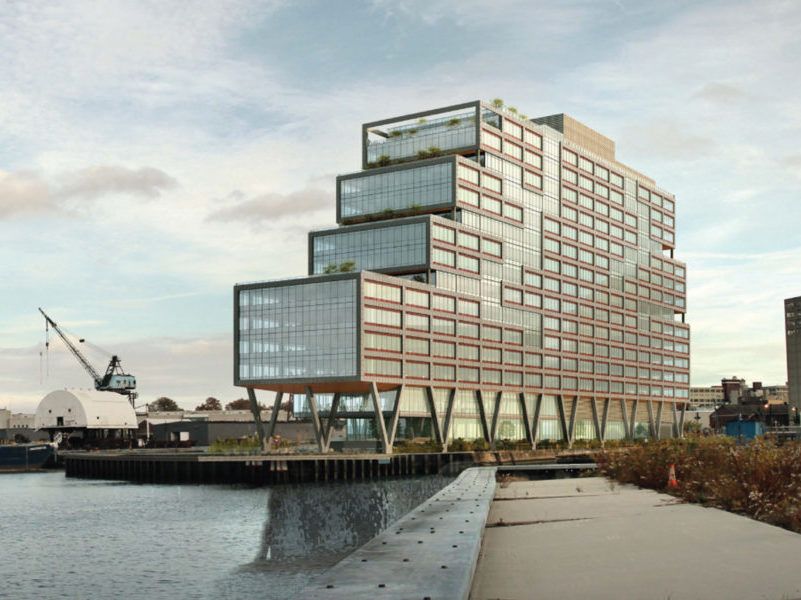
Dock 72 at Brooklyn Navy Yard
Following this year’s Presidential election, many American cities are evaluating their priorities for the next four years. One way that New York City promotes and showcases its design values regarding the built environment is through the Awards for Excellence in Design, now in its 34th year. This year’s 10 winners (plus two special recognitions) address many priorities heralded by Mayor Bill de Blasio, who announced that the selected projects “highlights New York City’s dedication to providing a wide range of design and public spaces that speak to the modern day New Yorker and meet the needs of a large, active and diverse city.”
Inclusivity is another key word, and Executive Director of the Public Design Commission, Justin Moore, told Untapped Cities that the projects also show how infrastructure can address “a number of goals and values for cities like improved sustainability for addressing climate change, or improved access to facilities and amenities for greater social equity. Our Excellence in Design Awards highlight projects that are directly taking these issues on–and we think are good models for our city and cities across the United States to look to when thinking about how public ‘infrastructure’ and design can lead to more positive outcomes.”
Without further ado, here are the 12 winners this year, with descriptions adapted from the press release.
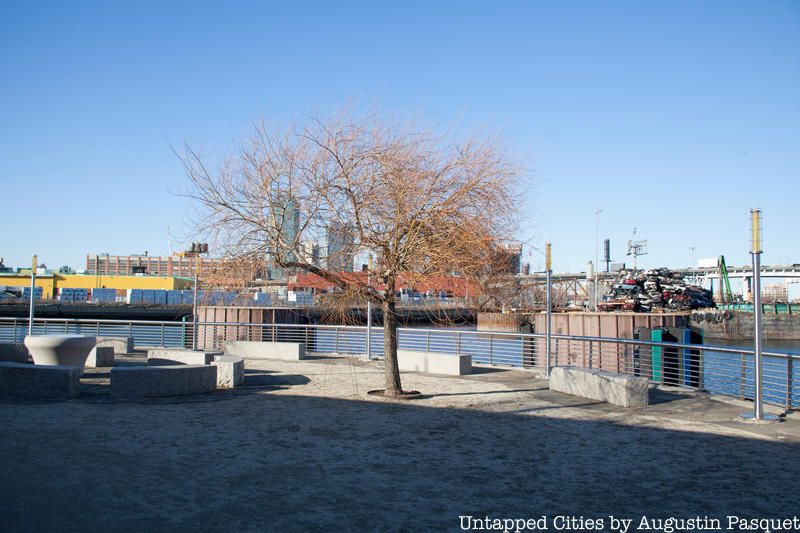
The Newtown Creek Wastewater Treatment Plant, with its notable digester eggs, is already a two-time winner of the Awards for Excellence in Design and now its Waterfront Nature Walk, designed by George Trakas, is also being recognized. Envisioned as a critical component of the awarded master plan for the Department of Environmental Protection’s plant, the Waterfront Nature Walk revives a long-inaccessible industrial shoreline along Newtown Creek for public use as a waterfront promenade and kayak launch.
The first phase of this environmental sculpture, completed in 2007, explores the rich history of the waterway from its use by the Lenape prior to the arrival of Europeans, to the bustling 18th-and 19th-century waterfront cooperage, ship making and lumber industries along its shores, to its current context abutting New York City’s largest, state-of-the-art wastewater treatment plant. These themes are drawn through dramatic site features, such as the 170-foot-long “Vessel” passage to the waterfront that evokes the angled timber construction of ships, and in details like trash receptacles designed to look like barrels, carefully selected plant material, and integrated graphics that have proven invaluable to DEP’s educational program at the plant.
The second and third phases of the Waterfront Nature Walk, currently under way, extend the promenade over Whale Creek to create a continuous walkway that connects to the street grid on either side of the plant. These phases also expand the artist’s conceptual focus from the local histories to ruminations on a broader history of ecology and human existence. The artist imbues public amenities such as bridged walkways, shade structures, benches, and drinking fountains with thought-provoking language, materials, and historical artifacts, notably the 385-million-year-old tree fossils unearthed at the Gilboa Dam in Schoharie County.
This project is by the Department of Cultural Affairs’ Percent for Art Program, the Department of Design and Construction and the Department of Environmental Protection, designed by George Trakas; Quennell Rothschild & Partners.
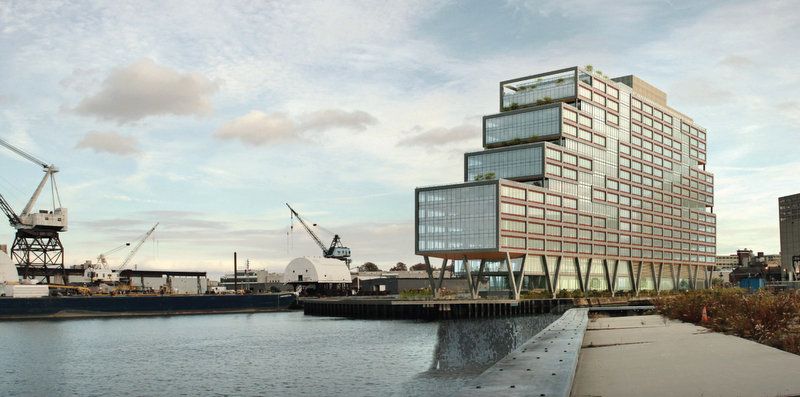
Embodying the future of the Brooklyn Navy Yard, Dock 72 will host a new location of WeWork and other innovative firms. The building’s design celebrates the maritime and industrial history of the Brooklyn Navy Yard while providing 21st-century shared work spaces that allow tenants to contribute to the Yard’s renewed life as a growing industrial hub. V-shaped columns lift the ship-like structure above the floodplain and form dual water and land access. The massing of the building steps down toward Wallabout Bay creating terraces with views of the surrounding Navy Yard, the East River, and Manhattan. Paths trace through the gridded façade, suggesting ant farm-like communal spaces and activities within. The building’s open and flexible work environments encourage the interaction of people and foster the sharing of ideas, both of which are critical to development of innovative creative communities. Creating 4,000 living-wage jobs, this development is a key effort of the de Blasio administration’s plan to double employment at the Navy Yard by 2020.
Dock 72 is a project by the Brooklyn Navy Yard Development Corporation, the Boston Properties, Rudin Development, and WeWork. It will be designed by S9 Architecture, who is behind the New York Wheel, Empire Stores and numerous other projects in New York City, and MPFP.
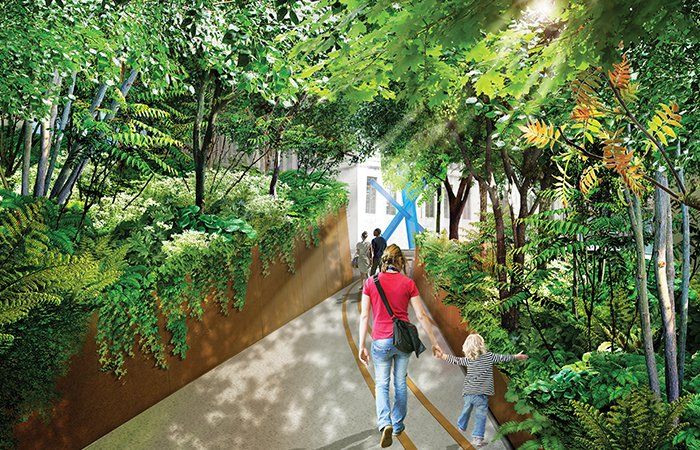
It’s hard to imagine that even more innovation is coming to the High Line but The Spur and the Passage will be the last segments of the High Line to open to the public, becoming the he northern gateway to this internationally loved elevated promenade. The Passage weaves through Hudson Yards’ south tower, which cantilevers 60 feet above the High Line. To celebrate this cathedral-like space, the design remains open and minimal, with seating along the north edge and planting, social spaces, and balconies at the southern edge.
The transition from the Passage to the Spur features a densely vegetated threshold of sloped planting beds. Here, a distinctive mix of large woodland trees will establish a dramatic 40-foot-tall canopy of lush greenery with an understory of ferns, broad-leaf groundcovers, and perennials. Perched above 10th Avenue and 30th Street, the Spur is envisioned as a piazza with amphitheater-like seating steps that surround a central plinth for a rotating art program. The Passage and Spur will offer expansive views, dense woodland plantings, ample public seating, and a large open space for public programming, as well as public bathrooms for High Line visitors. This project marks the culmination of nearly 20 years of work toward the transformation of this former rail line into a public treasure.
The Passage and Spur is a project by the Department of Parks & Recreation, the Economic Development Corporation, and Friends of the High Line. It will be designed by James Corner Field Operations; Diller Scofidio + Renfro and Piet Oudolf.
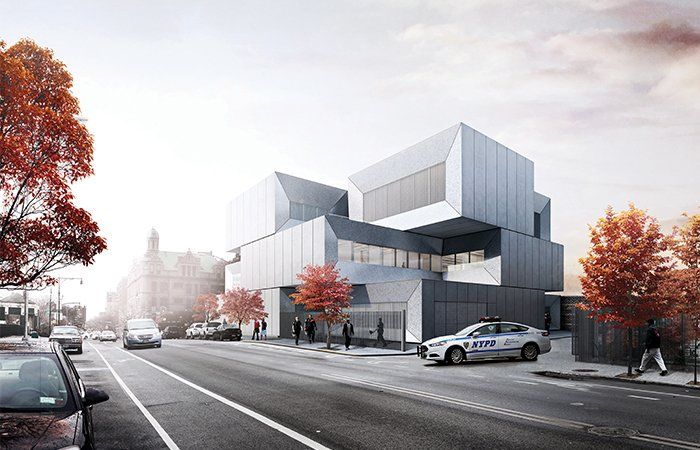
Police precincts are often overlooked in terms of design and architecture, but with the recent attention on social justice and criminal reform in the city, this project is a positive sign of things to come.
Located in the South Bronx, this new station house reinforces a commitment to serving the surrounding communities of Port Morris, Melrose, and Mott Haven while meeting the complex programmatic requirements of the New York City Police Department. The building’s unique form comprises stacked volumes that spiral around a central atrium, visually connecting interior spaces and bringing in daylight from a rooftop clerestory. The façade alternates between solid perimeter walls and glazed reentrant corners, providing security while also affording light and views.
The 40th Precinct surpasses requirements for LEED Silver certification with features such as green roofs, high-albedo surfaces, bike racks, low-energy LED fixtures, and low-flow plumbing fixtures throughout. An exterior courtyard at the precinct’s “stress reduction room” and a basketball half-court serve to promote mental health and activity within the workplace.
The 40th Precinct in the Bronx is a project by the Department of Design and Construction, the New York Police Department, Bjarke Ingels Group and Starr Whitehouse. The 40th Precinct includes the very first community meeting room within a police facility. With a porous façade and an artwork component, this flexible multipurpose room will provide space for classes and events.
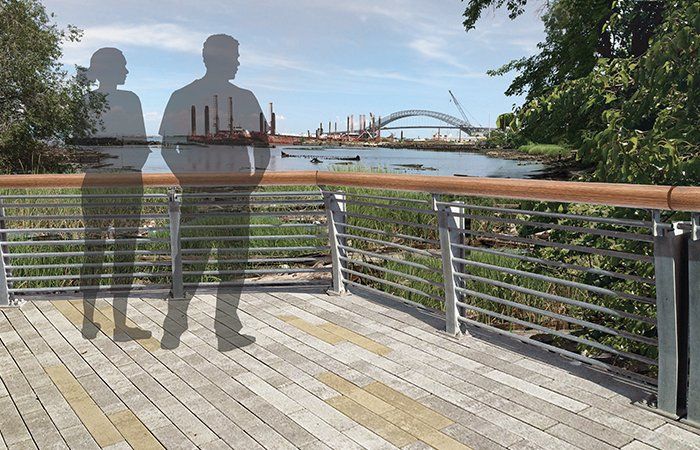
Nestled between the edge of a residential neighborhood and the working industrial waterfront of Staten Island’s north shore, this deteriorated site will be transformed into an attractive community asset with a pier that provides expansive views to the Kill van Kull and the Bayonne Bridge. The entrance plaza at Richmond Terrace incorporates wooden guard rails, new lighting, benches, and bike racks and connects to a path threading through a woodland area. A short walk leads visitors to a gathering space that can be programmed for educational use and features engraved maps that describe the evolution of the island in relation to the waterway. Durable materials such as stone paving and concrete piles are utilized to withstand flooding, while woody understory and herbaceous planting in the wetland park increase shoreline resilience. The design prioritizes public access to the waterfront while preserving the wetlands and enhancing avian habitat.
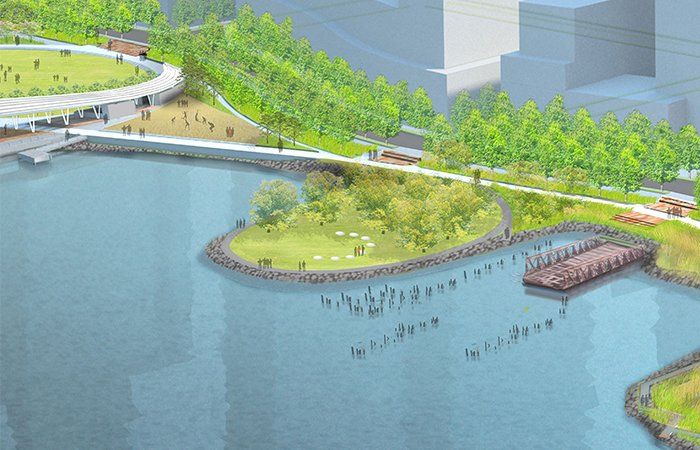
Set within the curved landscape of the Peninsula in Hunter’s Point South Waterfront Park, along the East River, Luminescence consists of seven sculptures both aesthetic and educational. A phosphorescent material integrated into the surface of each domed shape absorbs sunlight during the day and illuminates the phases of the moon at night with a soft blue glow. Additionally, the concrete and aggregate sculptures are etched with the moon’s pattern of craters, mountains and valleys. Placed at an overlook, the sculptures offer visitors the opportunity to contemplate the many influences of the moon – from its mystical and poetic powers to its physical gravitational pull on the river’s tidal rhythm. Luminescence is a project by the NYC Economic Development Corporation and the Department of Parks & Recreation, Nobuho Nagasawa; Thomas Balsley Associates; Weiss/Manfredi Architects.
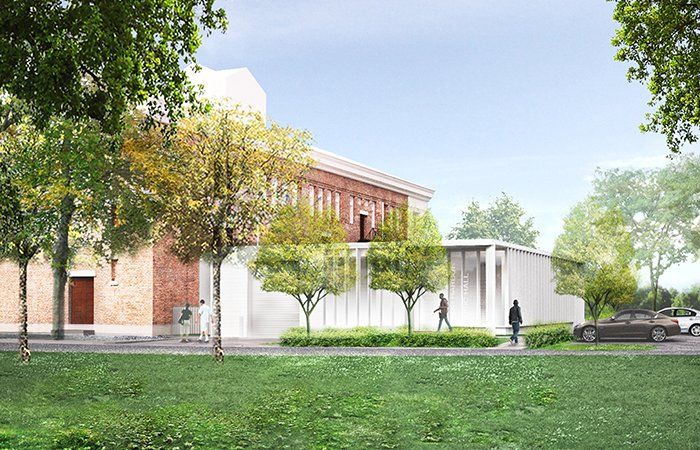
Snug Harbor is one of New York City’s overlooked cultural gems, soon to be better connected by the development at St. George and Staten Island’s north shore. This understated yet elegant addition will provide critical support spaces for the Snug Harbor Music Hall, which was completed in 1892 and is the second oldest theater in New York City.
The new structure is nested carefully between two of the original pilasters on the east façade of the historic building. Modest in scale, with one floor below grade, the design achieves a sense of presence through formal expression – deep overhangs at the entrances recall the portico of the Music Hall – and materials such as white board-formed textured concrete, glass, and steel. The highly transparent façade brings unexpected natural light to back-of-house spaces that are typically dim, and the fully-glazed southeast corner offers views to an interior artwork, commissioned through the City’s Percent for Art program.
Outside the public entrance to the building, a landscaped courtyard and lawn provides flexible space for the Music Hall and Snug Harbor campus. This project will reinvigorate the historic theater, enhancing programmatic opportunities and operational efficiency that enable this cultural gem to put on its distinctive performances.
The addition is designed by Studio Joseph;SCAPE/Landscape Architecture. This is a project by the Department of Design and Construction, the Department of Parks & Recreation, the Department of Cultural Affairs, and Snug Harbor Cultural Center.
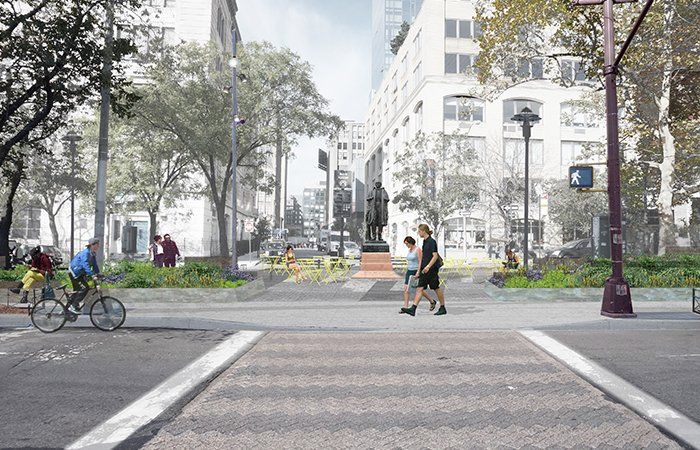
The renovation of SoHo Square at Sixth Avenue between Spring Street and Broome Street, an under-utilized open space, will establish a distinct gateway to the thriving hub of Hudson Square. The design derives its patterns and materiality from the area’s history as a printing district, while providing a variety of pathways, gathering areas, and seating to allow for diverse contemporary use of the site. Lush plantings provide a robust visual palette and permeable pavers and expanded tree pits enhance the overall health of the existing trees and capture stormwater runoff. A central focal point at the mid-block crossing will be anchored by the relocated statue of General José Artigas (1987) by José Luis Zorrilla de San Martín, which will be conserved as part of the project. This public-private partnership will create a pedestrian-friendly environment and improve the quality of life for the people who live and work in Hudson Square.
This project is by the Department of Transportation, the Department of Parks & Recreation, and the Hudson Square Connection Business Improvement District, designed by Mathews Nielsen Landscape Architects.
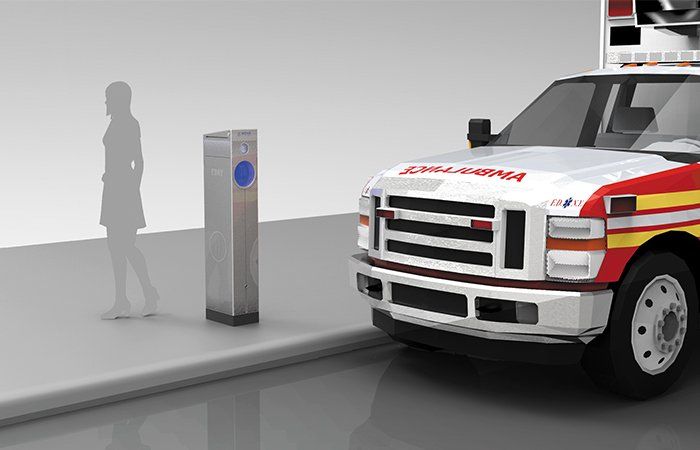
A city-wide design and technology initiative, the anti-idling ambulance pedestals will reduce ambulance vehicle emissions without disrupting the Fire Department’s critical emergency operations. By plugging in to these curbside pedestals, EMTs can safely shut off their engines while keeping their communication systems live and temperature-sensitive medicines refrigerated.
The anti-idling pedestal’s steel trapezoidal form efficiently accommodates the interior electrical components to minimize the structure’s footprint. At the top of the pedestal, a back-lit perforated pattern acts as a beacon and indicates the functioning status of the pedestal. A circular, LED-lit polycarbonate access door is remotely activated by the user and opens to reveal the plug-in cable, which retracts automatically after use, allowing for a quick ambulance departure. This smart industrial design improves neighborhood air quality and ensures that the City’s ambulances are ready to respond to emergencies at a moment’s notice.
This pedestals were designed by Ignacio Ciocchini and MOVE Systems in a project by the Fire Department of the City of New York.
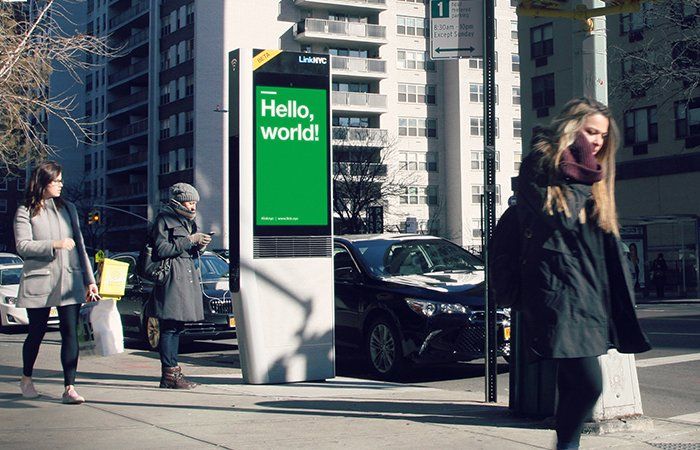
LinkNYC is a new telecommunications network replacing old payphones with “Links” that benefit the public – especially those of limited means – by offering free services such as high-speed Wi-Fi, mobile device charging, and a custom-built tablet for Internet-access and telephone calls within the United States. The silver and black streamlined design is intended to complement the prototypical newsstands, bus shelters, and wayfinding signs throughout the city yet retain a distinct, easily-recognizable form. In an effort to decrease susceptibility to flooding damage, the main electrical components are situated high up within the kiosk
News is that the design is so user-friendly, it initially encouraged less than savory usage but the city has adapted what can be viewed in return. LinkNYC was a project by the Department of Information Technology & Telecommunications, and designed by CityBridge.
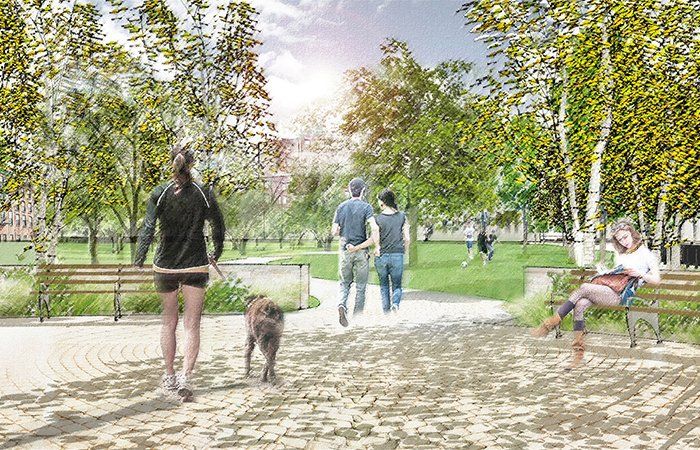
The Awards for Excellence in Design also gave special recognition to two completed projects, Parks Without Borders and the Community Parks Initiative. Parks Without Borders aims to improve the interface between New York City parks and their surrounding neighborhoods. As part of OneNYC, this initiative aims to make parks more welcoming, accessible, and active. Each design concept will begin at the park edge, with lowered fences and gates, wider and more porous entrances, and improved sightlines into the park.
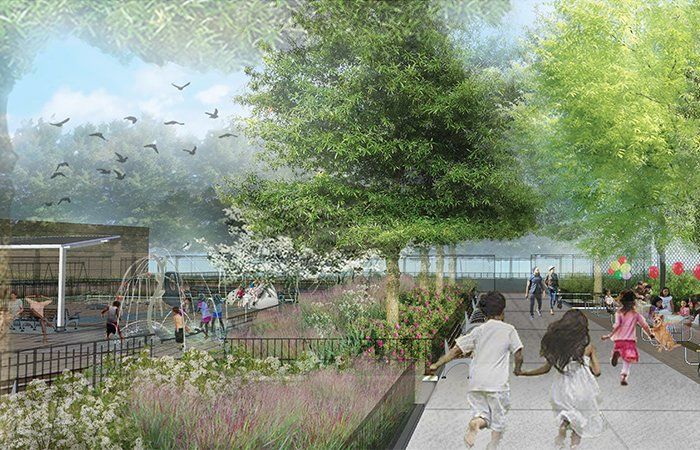
Similarly, The Community Parks Initiative seeks to transform bleak, paved yards (often with high chain-link fences) into green parks with playgrounds for children, animated water play, multi-use courts and fields, sitting areas, and multi-generational community gathering places. The initiative also includes five new and 15 reconstructed comfort stations and incorporates green infrastructure to manage on-site and street storm water runoff.
Next, check out 10 of the most unconventional public buildings in NYC and 5 of NYC’s Microcities.
Text for this article is an adaptation from press materials from City Hall, with additional notes by Untapped Cities staff.
Subscribe to our newsletter